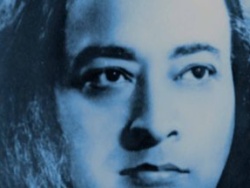 Nitai Deranja founded the first Living Wisdom School at Ananda Village in 1972 based on the Education for Life (EFL) system. Education for Life is unique in its emphasis on inspiring each child from within to find their unique gift for life, to learn the skills needed to succeed in life from a holistic perspective.
Nitai Deranja founded the first Living Wisdom School at Ananda Village in 1972 based on the Education for Life (EFL) system. Education for Life is unique in its emphasis on inspiring each child from within to find their unique gift for life, to learn the skills needed to succeed in life from a holistic perspective.
“Student-centered, not curriculum-centered.”
Nitai is also the author of two books on childhood education: The Art of Joyful Education and For Goodness’ Sake: Supporting Children & Teens in Discovering Life’s Higher Values.
Q: What was it like to work with the filmmakers at Ananda Village?
Nitai: I didn’t get a chance to talk at length with them about the school because I was only there for a weekend’s filming, and we were busy with the shoot most of the time. But Elisabeth Rohm, who plays the lead role in the film, was excited to find out how her daughter Easton, who was five, could benefit from the Education for Life principles we follow in the schools.
The children were enthusiastic about being movie extras until they realized that every scene had to be re-shot twenty times, whereupon they rapidly lost interest. (laughs) Children are spontaneous, and movie-making isn’t.
Q: The segment on the schools was a whirlwind overview. Is there anything you wish you’d had more time to say?
Nitai: After the first take I realized I’d have to throw out about eighty percent of what I wanted to say. In the movie scene, I walk between two buildings while I explain the entire philosophy of Education for Life. It’s a one-minute walk, so I could only say a tithe of what I hoped. (laughs) I realized you can’t go very deep in a movie, because audiences want action and a good story.
Q: Now is your chance to go deep.
Nitai: Okay. I regret I didn’t have time to talk about consciousness in education. In our schools, we work with the child individually, and focusing on their consciousness gives us a foundation to help the individual child.
In the book, Education for Life, Swami Kriyananda talks about how a child’s consciousness can be “heavy,” “ego-active,” or “light,” or a mix of these qualities. The idea of a spectrum of consciousness is easier to understand with concrete examples. Let’s assume we want to help a child develop more wise judgment. When they’re at the “heavy” level of awareness, their energy is low, passive, and they tend to misunderstand. And even if they do understand something, they tend to interpret it in a lazy, superstitious manner. A heavy consciousness implies a low-energy mind that’s narrow, and always looking for the easiest way to get by. It wants to sleep or gaze about and do nothing. It’s consciousness in an undeveloped state.
When a child’s energy rises to the ego-active level, they’re starting to realize that wisdom exists. But even at that stage, they don’t care. They may even mock wisdom. “Oh yeah, those people are soooo spiritual, ha-ha.” They’re somewhat more aware, but they aren’t ready to take wisdom seriously and act on it. If you suggest a wise course of action, they’ll probably push back. “Well, I have my own values.”
Q: They still lack sensitivity?
Nitai: Yes. The notion of considering a wise course of action hasn’t opened up for them yet. They haven’t learned that there are options that will give them more of what they want.
 As children rise to the “light” level, they’re starting to understand that there’s more to life than material things. They’ve usually had some hard knocks, and they’re starting to ask questions. They’re anxious to avoid any more suffering, so they begin to want to understand how life works. As they rise out of the ego-active level, there’s a respect for wisdom as a way to avoid the hard knocks and be happier. There’s a sense of looking around and trying to weigh the consequences of their actions and understand life.
As children rise to the “light” level, they’re starting to understand that there’s more to life than material things. They’ve usually had some hard knocks, and they’re starting to ask questions. They’re anxious to avoid any more suffering, so they begin to want to understand how life works. As they rise out of the ego-active level, there’s a respect for wisdom as a way to avoid the hard knocks and be happier. There’s a sense of looking around and trying to weigh the consequences of their actions and understand life.
When they reach the highest level, they’re starting to be able to live by higher principles. For example, they’re able to reflect on what it’s like to be unselfish, and understand that it makes them feel happy.
Q: In your book, The Art of Joyful Education, you mention Leonard Kohlberg, a Harvard researcher who studied children of many cultures, and how they all pass through the same stages of increasing moral awareness. Does Kohlberg’s scale relate to the terms you’re using?
Nitai: I wrote that book in response to a request from a professor in the late 1970s. My master’s thesis was on the eastern approach to evaluating children’s values, and he said, “You need to tie it to a western model. Go study Leonard Kohlberg.”
I had a strong feeling that Kohlberg must have touched on the eastern view at some point, because his scale matched so perfectly. But he framed it in western terms, with data from many countries.
He talks about the idea that some people are very moral, but they’re very rule-bound. They’re the people who obey all the traffic laws and pay their taxes on time, because obeying rules and laws gives them an enjoyable feeling of belonging and being good citizens. But a step beyond that stage we find people who follow more inwardly directed values – they do the right thing because it feels right and harmonious and personally fulfilling.
Q: In Education for Life Swami Kriyananda talks about how our sense of values evolves. He says it’s not really possible to rise to a higher level of awareness until we’ve realized “with inner knowing” that it’s what we want. In the Living Wisdom Schools, how do you help a child who’s lazy and passive realize that energy is a tool to get what he wants?
Nitai: At the bottom level, they’re not even capable of thinking like that. (laughs) They don’t have a motivation to summon the energy to act and get something better. So you have to provide it. You do it by something we don’t like to call “punishment” in our school, so we call it “removing privileges.” (laughs) It’s the idea that “If you don’t get out of bed and get to school on time, there won’t be any dessert in your lunch box.”
It has to be something they value, and you have to spend time working with them at that level. So, okay, now they’re getting up and getting to class on time. Then the next step is where you offer them an external reward for putting out positive energy. “Bribe” is too harsh a word, but as Shakespeare says, you get them to “pretend a virtue if you have it not.”
If they don’t have kindness, you reward them when they perform kind actions, until they begin to act that way. At first they’re doing it for the reward, but after they’ve done it a few times they’ll start to think, “Hey, I feel better when I do this.” At that point, you’re over the hump and you don’t have to reward them anymore. You can appeal to their desire to feel good.
But they don’t have that experience at the start. And if you say “Johnny, if you share your doughnut you’re going to feel better,” they’ll say “No way – I’m not giving up my last doughnut!” (laughs)
You can’t motivate children beyond what they’ve experienced. At the higher levels of awareness, you can say “Remember how you shared your doughnut and you told me how good it felt?”
“Oh, yeah.”
“Well, now you’ve got some candy and you can get the good feeling again.”
Q: Does this relate to how they apply themselves in school? Do they evolve from being uninterested, to working for a reward, to working because it’s enjoyable?
Nitai: Yes. If they’re fixated on being a four-point-oh student, they’re probably at the ego-active stage. The lighter students aren’t motivated so much by grades. They’re motivated by what inspires them, and what they feel excited about learning. Typically they’ll have lots of things they want to explore, because they’ve learned to love learning.
At Ananda College we have quite a few students who come to us from that stage. Many haven’t excelled in high school or junior college, because the system of external rewards didn’t make sense to them. The materialistic value system – “If you get good grades you’ll make lots of money” – didn’t match their awakened sensitivities, so they might have dropped out or gotten mediocre grades. And when they enter a situation where their individuality and creativity are valued, they blossom and they’re excited about learning.
Q: My college graduating class is having its 50th reunion. I remember how, when I took courses that fed my search for meaning I got excellent grades, but otherwise I wasn’t terribly interested.
Nitai: Who wants to memorize a bunch of facts and spout them back? We named our university Ananda College. “Ananda” means the bliss of the soul. And we gave it the subtitle “Higher Education for Higher Consciousness.” We’re entering our 10th year, and we’re still putting the pieces together, but it’s been an excellent experience.
Q: Are the students happy with the education they receive?
Nitai: We’ve received wonderful testimonials. Mainly the students talk about the experience of discovering who they are, as individuals. It gives them a place to launch from and learn about life and other people’s realities, and expand their awareness of the world.
The testimonials aren’t the usual “chestnut tree and wishing well” college memories. I’ll share what one student wrote:
“It has been the most blissful, challenging, beautiful and expansive experience in my life, by far! Every day is filled with joy and wonder…. Academically, all the classes are stimulating and directly relevant to my personal, spiritual life. I can instantly apply everything I learn in the books.”
Q: As the founder of an alternative school, what do you see as a better direction for education today?
Nitai: We call our schools “student-centered,” as opposed to “curriculum-centered.” There are major implications in those terms. “Curriculum-centered” means that someone sets up the system, and the teacher’s job is to make sure the students meet the demands of the system. The curriculum is set before the student walks in the door, and it has nothing to do with the student. Everybody who walks in is expected to do the same thing, mandated by the committee that sets the curriculum.
A “student-centered” curriculum says that when the student walks in, the teacher starts with them. By getting to know the student, the teacher can adapt what happens in the classroom so it addresses each student’s needs.
It means the teacher never gives the same class twice. Every time you walk into the classroom, you’re adjusting the lesson plan to the student’s particular needs, at that time.
It sends a message that the students are respected as people, where the other system tells them they don’t matter so much, because the system is what counts and they’re just fodder for the mill.
In education, one of the better-known directions today is called “personalized learning.” It’s a big deal in the charter school movement, and it’s definitely a move in the right direction. But it’s a bit narrower than what Education for Life does, because it doesn’t include all of the personal dimensions of the student.
In Education for Life, we deal with the intellect, which every school at least pretends to understand. But then we also deal with the body, which everybody thinks they understand because they have sports and PE. But what hardly ever gets addressed is the heart and will, and an even deeper understanding of the body and intellect. That’s the richness of Education for Life.
Something else I wish I’d had time to say in the film is that it works. (laughs) There’s a page on the Edforlife website dedicated to this, with an overview of our test scores, showing how the system proves itself in academics.
Q: I interviewed Gary McSweeney, the middle school teacher at Living Wisdom School in Palo Alto. We talked about how the children learn math. Gary explained that the students are a lot more engaged because they’re taught as individuals.
He pointed out that the class is more efficient, because the teacher doesn’t have to nag the kids to learn, or manage discipline problems. When I spent time in the class, I saw the system at work. Even though it was the end of the school year, when kids are supposed to be impossible to motivate, they were working with enthusiasm and focus.
Nitai: Again, it works because we respect them, to the extent that we’re willing to adjust the curriculum to serve their needs.
Q: Parents often want to know how the system can address the individual student without losing academic rigor.
Nitai: “Academic rigor” is kind of an interesting term.
Q: Because it suggests rigor mortis?
Nitai: Oh yes. (laughs) Everybody knows that if you’re doing something you’re excited about, you’ll work your tail off. You’ll put in extra time, and you won’t complain, because it’s what you want to be doing. And for more than 40 years we’ve shown that education can be that way.
If you’re beaten down by a curriculum-centered system, and then you leave school and realize you’re free to learn what interests you, you’ll take off. People will spend endless hours working on a hobby they love, and they’ll achieve excellence as a byproduct of that love.
As for “rigor” – it’s true that there’s a certain value in perseverance, concentration, and the doggedness to plow through. But if you’re just being rigorous because you’re trying to meet the demands of a system, it’s probably not education. It’s probably indoctrination.
Q: When people worry about rigor, there seems to be an implication that we’d better brush enthusiasm aside, because feelings aren’t rigorous.
Nitai: It’s amazing how deeply that thought is ingrained in our culture, that education should be painful. Helen Purcell, director of the Living Wisdom School in Palo Alto, told me about a mom and dad who took their child out of the school because, as they put it, “He can’t be learning anything. He’s much too happy.” (laughs)
Even after forty years, we still have to persuade parents that education can be joyful. In Palo Alto, they have a motto “Where learning and joy come together.” It’s true. People learn best when they’re highly enthusiastic, and feel respected and included.
I visited the Portland school for the year-end ceremony, and two sets of parents separately approached me. They said, “My child was so depressed and sad today, and when I asked them why, they said, ‘Because it’s the last day of school, Mom, and I can’t go tomorrow!’”
Further Reading:









